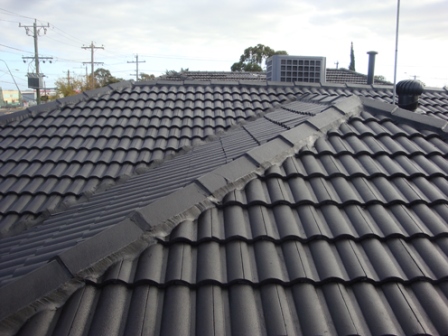Roofing is a important component of architecture for several necessary reasons:
Protection from the Elements: One of the primary features of a roof is to provide shelter and protection from environmental components corresponding to rain, snow, wind, and extreme temperatures. It prevents water from coming into the building, which can trigger structural damage, mildew development, and different issues.
Structural Integrity: Roofs play a crucial role in maintaining the structural integrity of a constructing. They distribute the weight of the roof and any loads (e.g., snow) evenly to the partitions and foundation. A well-designed and correctly constructed roof ensures the steadiness and security of the whole structure.
Aesthetics and Design: Roofs are a visible and distinguished a part of a constructing's exterior. Architects use roof design to boost the general aesthetics of a structure. The shape, material, and elegance of the roof can contribute to the architectural character and enchantment of a constructing.

Environmental Considerations: Sustainable architecture places an emphasis on vitality effectivity and environmental responsibility. Roofing supplies and design can impact a constructing's vitality performance. For instance, cool roofs can reflect extra daylight and absorb less heat, reducing cooling prices and concrete heat island results.
Natural Lighting and Ventilation: Roof design can incorporate features like skylights, dormers, and roof vents to provide pure lighting and ventilation inside a constructing. This can improve indoor comfort and cut back the need for synthetic lighting and mechanical air flow.
Click here to find out more and Cultural Significance: In some architectural styles, corresponding to Gothic or Victorian, the roof could be a key component that reflects the historic and cultural context of a building. Roof particulars and shapes can tell a narrative about the era by which a structure was constructed.
Space Utilization: Roof design can create further usable area inside a building, corresponding to attic rooms, rooftop gardens, or outside dwelling areas. Architects typically think about the method to maximize house and functionality when designing roofs.
Energy Efficiency: Energy-efficient roofing materials and design can contribute to a constructing's general power efficiency. Proper insulation and air flow might help regulate indoor temperatures and cut back heating and cooling prices.
Safety and Fire Resistance: Roofing materials are chosen with safety in thoughts. Some materials, like fire-resistant roofing, might help prevent the unfold of fires in a building, offering priceless time for occupants to evacuate.
In abstract, roofing is a elementary side of structure that mixes practical and aesthetic issues. It not only protects the interior of a building from the elements but in addition contributes to the general design, sustainability, and safety of a construction. Architects fastidiously consider roofing supplies, shapes, and features to realize their design goals while guaranteeing the comfort and well-being of building occupants..
